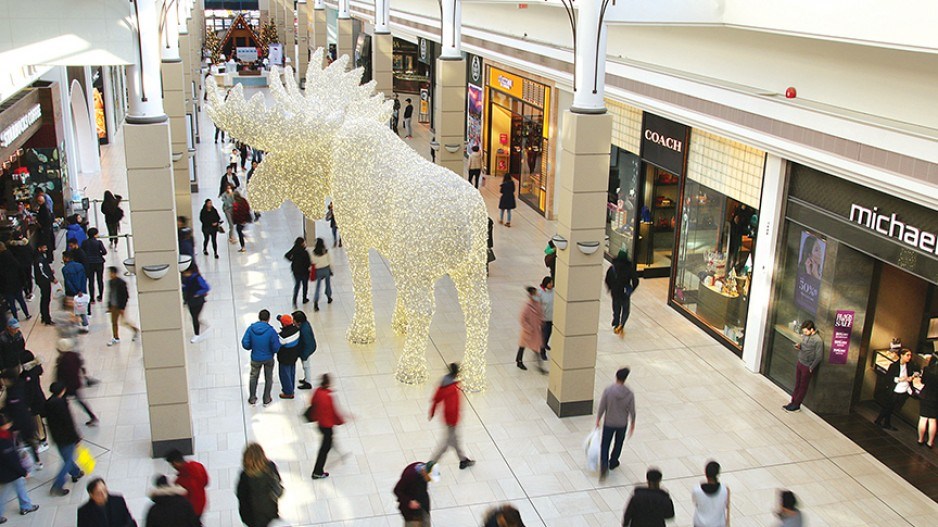Retail spending in Canada reported a surprisingly robust end to 2023. Seasonally adjusted retail sales rose 0.9 per cent from November to December to reach $67.3 billion, with five of nine subsectors up.
The increase was led by growth in automobile and parts sales, and sales at general merchandise stores, up 1.9 per cent and 2.7 per cent, respectively. Lower sales were seen at furniture, home furnishing, electronics and appliance retailers (down 2.7 per cent) and health and personal care retailers (down 1.6 per cent).
For 2023, total Canadian sales were up 2.1 per cent from 2022 at $793 billion. Motor vehicle and parts sales rose seven per cent, and health and personal care sales rose 8.6 per cent. Offsetting this was a 9.9-per-cent decline in sales from gasoline stations and fuel vendors, and an eight-per-cent decline in building material and garden equipment and supplies. Five out of the nine subsectors saw higher sales for the year.
In B.C., seasonally adjusted retail sales for December 2023 were even stronger than the national average, up 1.5 per cent to $9.3 billion—a fourth consecutive monthly increase. However, annual sales lagged and rose by only one per cent to $118 billion. This points to a greater drag in the economy from high debt loads and elevated interest rates.
Six of nine subsectors in B.C. saw higher sales for the year. Leading the way were clothing and clothing accessory retailers (up 11.9 per cent), health and personal care retailers (up 10.5 per cent) and motor vehicle and parts dealers (up 3.1 per cent). Lower sales were seen in sporting goods and hobby retailers (down 11.9 per cent), building material and garden equipment retailers (down 13.6 per cent) and gasoline stations and fuel vendors (down 6.8 per cent).
In Metro Vancouver, seasonally adjusted retail sales matched B.C. growth with a 1.5-per-cent increase. For 2023, sales rose 1.3 per cent to $54.1 billion.
In December, the number of non-resident travellers entering Canada through British Columbia declined for a second consecutive month. On a seasonally adjusted basis, there were 1.3 per cent fewer visitors in December than in November. The number of same-day excursions increased 0.7 per cent but the number of overnight tourists decreased by 2.5 per cent. This was the first decline in the number of overnight tourists since April 2023.
The number of U.S. residents entering Canada through B.C. declined 0.7 per cent in December to a seasonally adjusted total of 530,965 people. Despite the decline, it is still 3.5 per cent above the monthly average in 2019. The number of visitors from countries other than the U.S. declined 3.5 per cent, and is approximately 82 per cent of the monthly average observed in 2019. U.S. residents entering Canada through B.C. declined for those entering by automobile (down 1.4 per cent) and those entering by other modes of transportation (down 0.6 per cent). U.S. air travellers rose by one per cent. The decline in the number of non-residents from countries other than the U.S. was driven by those who came by air, which fell by seven per cent. The number of non-residents from non-U.S. countries travelling by land or water increased by 9.8 per cent.
Bryan Yu is chief economist at Central 1.




